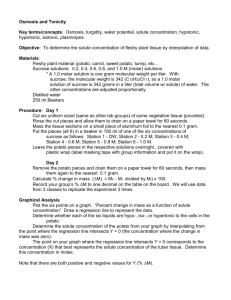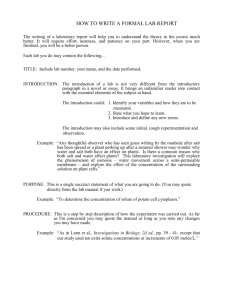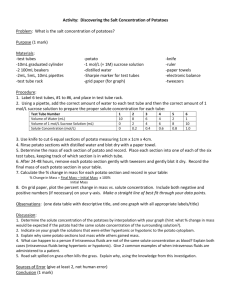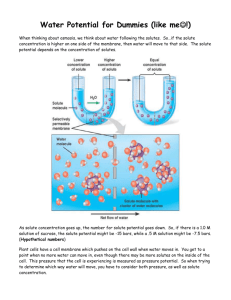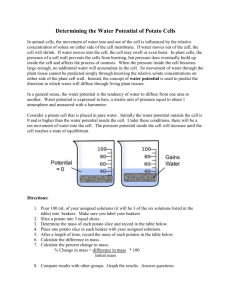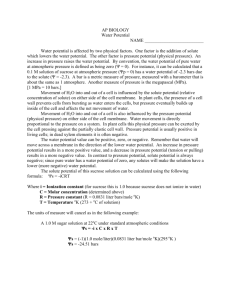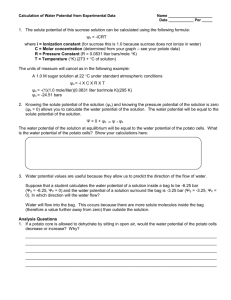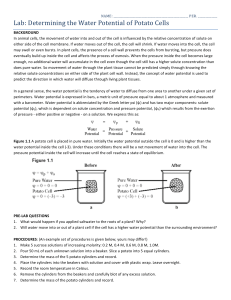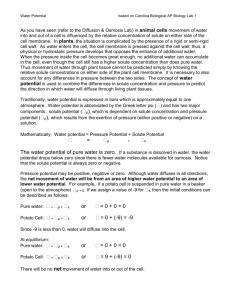Osmosis and Tonicity
advertisement
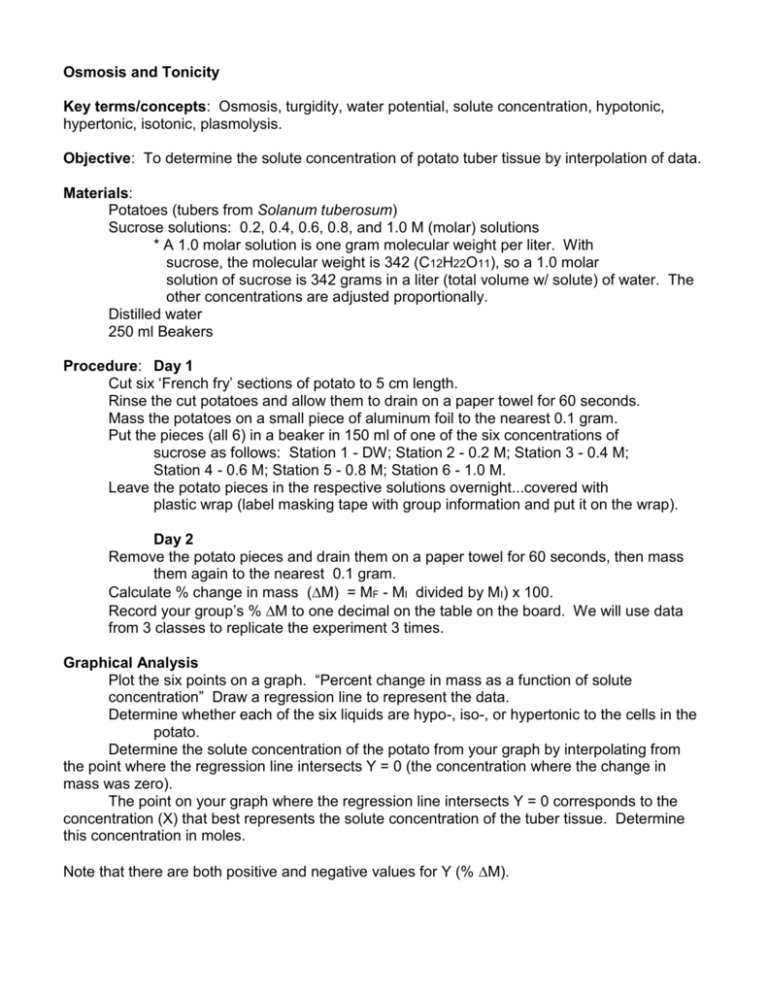
Osmosis and Tonicity Key terms/concepts: Osmosis, turgidity, water potential, solute concentration, hypotonic, hypertonic, isotonic, plasmolysis. Objective: To determine the solute concentration of potato tuber tissue by interpolation of data. Materials: Potatoes (tubers from Solanum tuberosum) Sucrose solutions: 0.2, 0.4, 0.6, 0.8, and 1.0 M (molar) solutions * A 1.0 molar solution is one gram molecular weight per liter. With sucrose, the molecular weight is 342 (C12H22O11), so a 1.0 molar solution of sucrose is 342 grams in a liter (total volume w/ solute) of water. The other concentrations are adjusted proportionally. Distilled water 250 ml Beakers Procedure: Day 1 Cut six ‘French fry’ sections of potato to 5 cm length. Rinse the cut potatoes and allow them to drain on a paper towel for 60 seconds. Mass the potatoes on a small piece of aluminum foil to the nearest 0.1 gram. Put the pieces (all 6) in a beaker in 150 ml of one of the six concentrations of sucrose as follows: Station 1 - DW; Station 2 - 0.2 M; Station 3 - 0.4 M; Station 4 - 0.6 M; Station 5 - 0.8 M; Station 6 - 1.0 M. Leave the potato pieces in the respective solutions overnight...covered with plastic wrap (label masking tape with group information and put it on the wrap). Day 2 Remove the potato pieces and drain them on a paper towel for 60 seconds, then mass them again to the nearest 0.1 gram. Calculate % change in mass (M) = MF - MI divided by MI) x 100. Record your group’s % M to one decimal on the table on the board. We will use data from 3 classes to replicate the experiment 3 times. Graphical Analysis Plot the six points on a graph. “Percent change in mass as a function of solute concentration” Draw a regression line to represent the data. Determine whether each of the six liquids are hypo-, iso-, or hypertonic to the cells in the potato. Determine the solute concentration of the potato from your graph by interpolating from the point where the regression line intersects Y = 0 (the concentration where the change in mass was zero). The point on your graph where the regression line intersects Y = 0 corresponds to the concentration (X) that best represents the solute concentration of the tuber tissue. Determine this concentration in moles. Note that there are both positive and negative values for Y (% M).
